If the butterflies at the Norfolk Botanical Garden have heard the news that they’ve earned a major recognition, they’re doing a good job of keeping it to themselves. For the moment, they’re too busy courting, laying eggs, sipping nectar and dodging the occasional frog. But the native-species-only Butterfly House that they call home was just named the No. 1 butterfly house in the nation by USA Today’s 10Best awards.
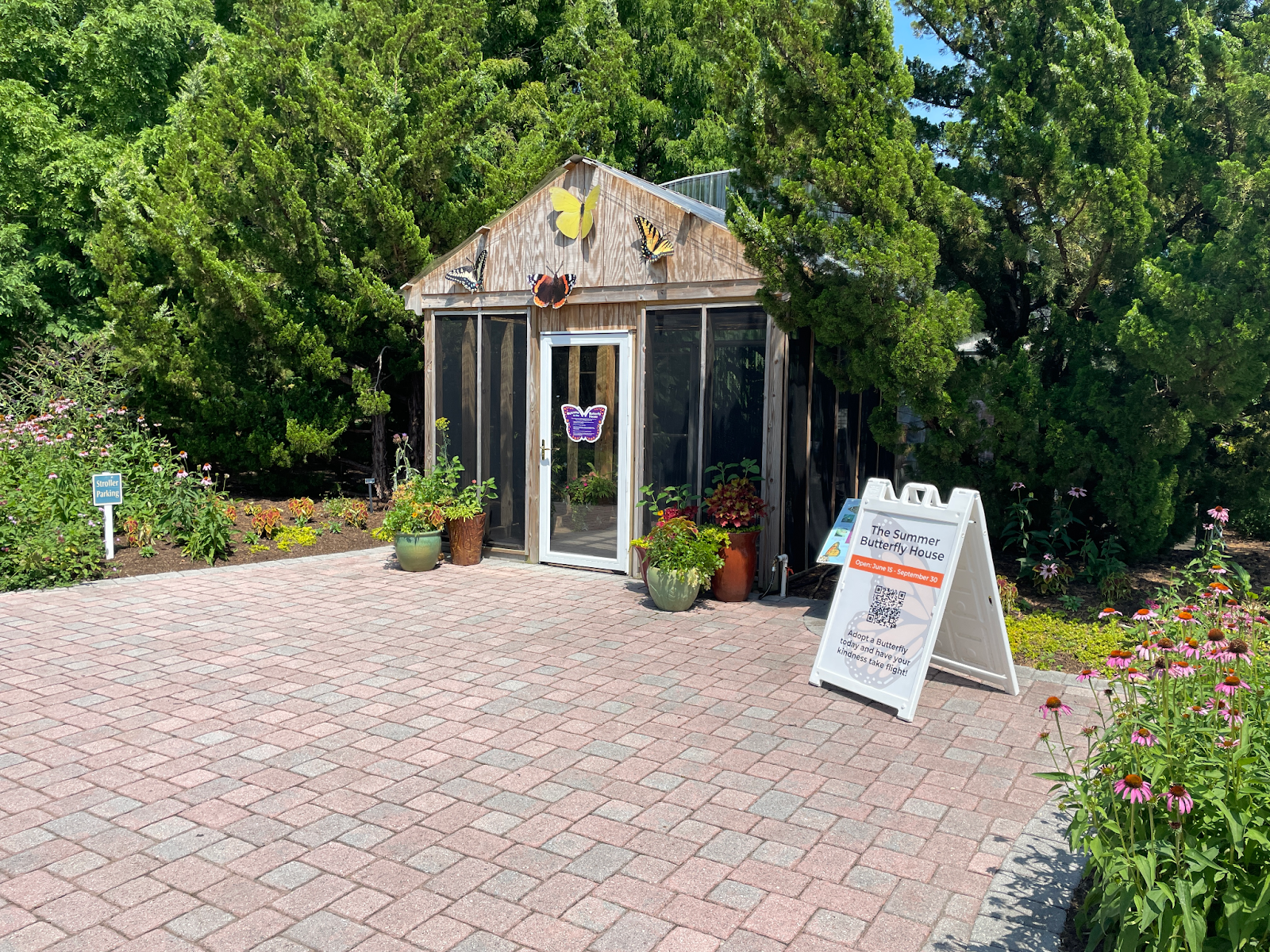
For Lauren Tafoya, who has spent sixteen seasons raising caterpillars and managing the exhibit, the recognition is a well-deserved nod to many years of effort. “Our focus is on ecology and conservation,” she says. “We’re not showing you something tropical and far away. We’re showing you what you can actually support in your own backyard.”
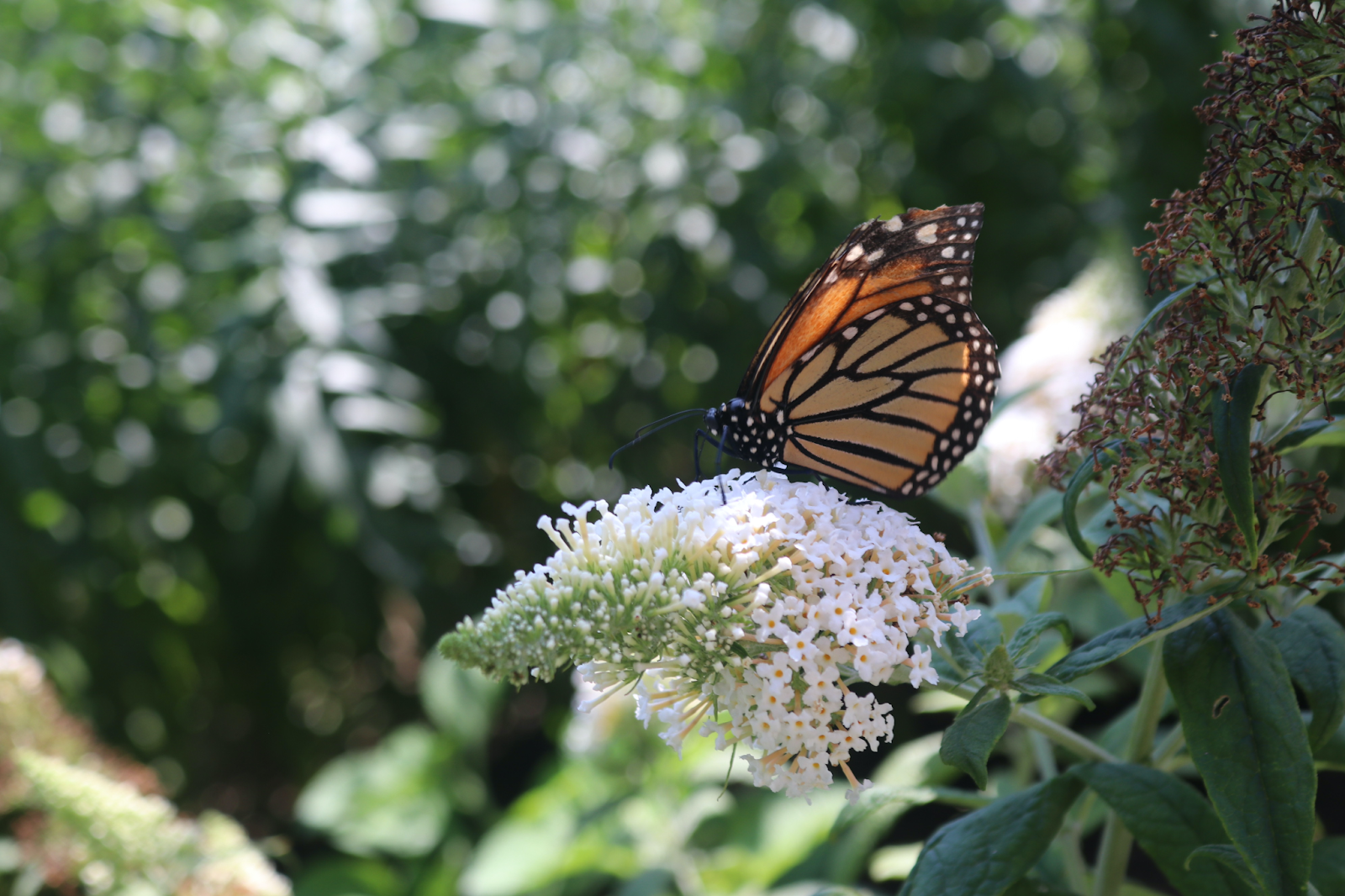
Indeed, the Norfolk Botanical Garden’s annual Butterfly House (open now through Sept. 30) only hosts butterflies native to the region. That choice allows them to live freely, without the USDA restrictions that prohibit reproduction in tropical species. Here, everything unfolds as it would outdoors: eggs are laid, caterpillars feed and butterflies emerge in real time.
A Self-Sustaining Ecosystem
Tafoya says that with limited predation the butterflies are forced to lay all their eggs in a relatively small space. In the wild, they would disperse across a broader landscape.
“Part of my role is to purge caterpillars or eggs off of the plant,” she explains, removing the excess to prevent overfeeding. “And then those are free to finish their feeding cycle, go through the metamorphosis process, and turn into the butterflies that they’re going to be.”
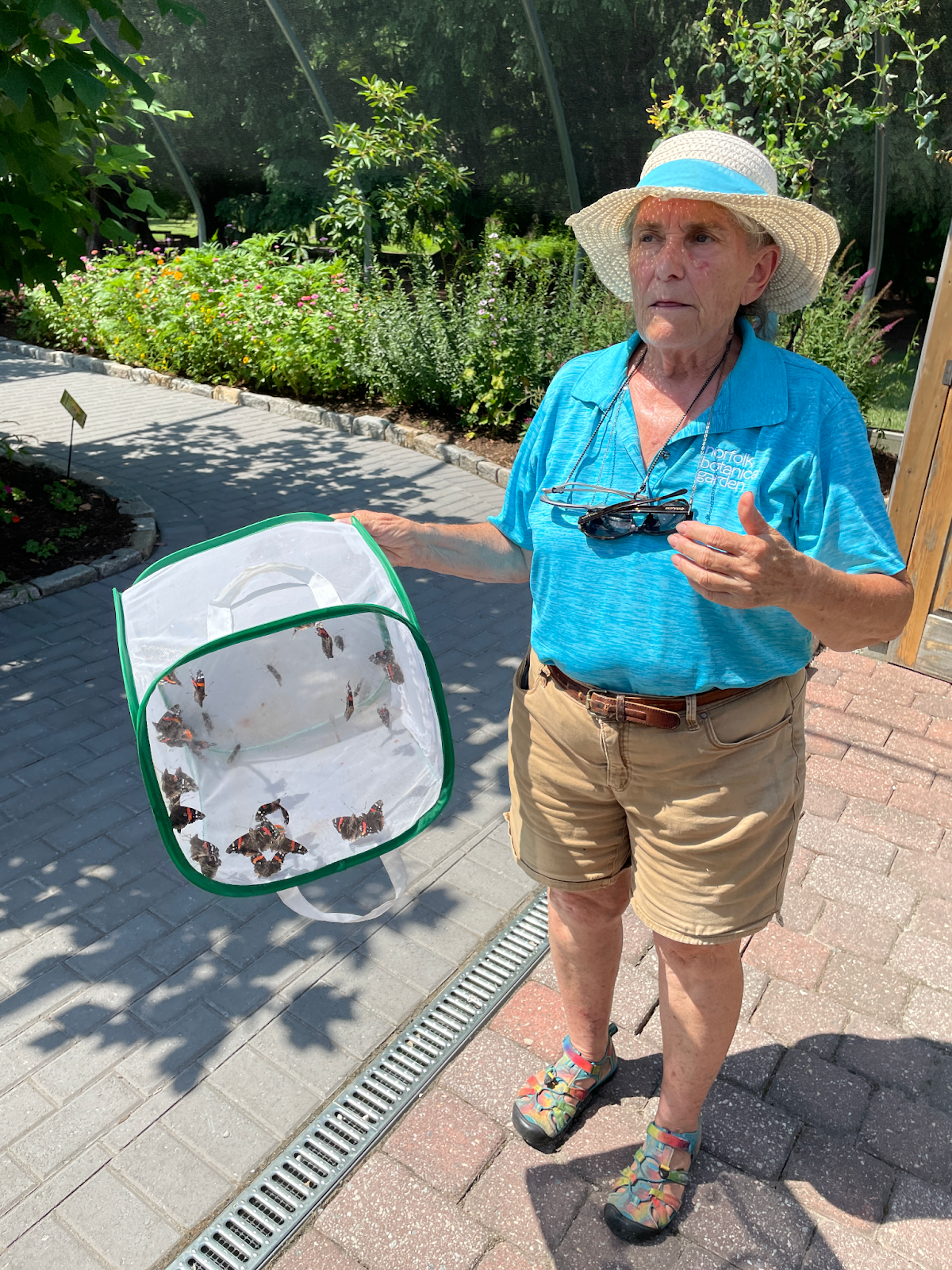
Tafoya walks the space multiple times daily, monitoring each stage of the life cycle. “I can walk around and show you eggs, caterpillars, chrysalis, and how that behavior would be in your garden space,” she says.
Inside, plants are carefully chosen not just for nectar, but to match the specific dietary needs of each species. “Every species of butterfly as a caterpillar has a partner food group,” Tafoya says. “And they cannot eat outside of that.” The butterflies themselves “taste with their toes,” she adds, and will starve before eating something incompatible.
This precision, combined with the rhythm of transformation, makes the house more than a display. “Once an egg is laid, it hatches in three to five days,” she says. “Each caterpillar needs to feed for about 14 days.” After that, they transform for another two weeks, emerge and live as butterflies for around two more weeks, laying eggs the entire time. The result is a constant overlap of generations, with new life hatching nearly every day.
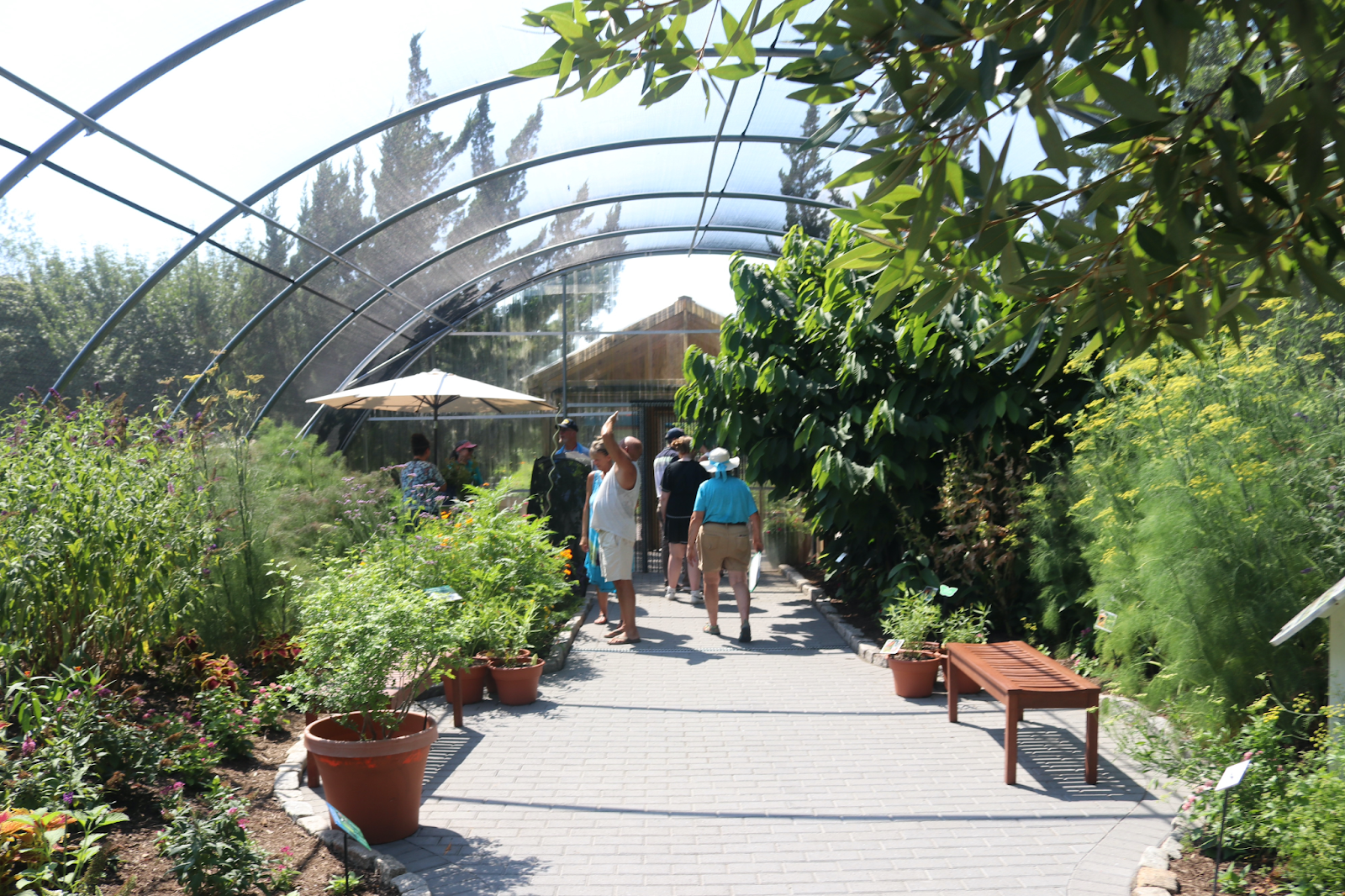
From Temporary Exhibit to National Model
The Butterfly House began in 2009 as a short-term summer feature. “This was supposed to be like a one summer seasonal exhibit, and that was it,” says Alex Cantwell, Director of Adult Education and Conservation at NBG. But the public had other ideas and the Summer Butterfly House has emerged from its cocoon each year since.
More than 15 years later, the program has evolved into a nationally recognized model. Other gardens, including one in Coastal Maine, have visited to replicate it, Tafoya says.
Tafoya stresses that the garden’s butterfly house isn’t just about housing pretty species. To her, it’s an act of empowerment for locals looking to attract butterflies to their own gardens.
“It would be lovely to show you these fabulous, tropical butterflies,” she says. “But they’re never going to fly to your backyard, so let’s give you what you can do.”
Tafoya says visitors regularly express surprise at how specific the relationship is between caterpillars and plants. “People come in and talk about how they planted all these fabulous flowers, and they’re so disappointed because they only see butterflies for a few minutes,” she says. “Butterflies are a restaurant. You’re hungry, you stop. You may never go back again.”
To help change that, the team has created garden beds outside the house in varying sizes, showing visitors how to replicate habitat, even in small quarters. “We get the people who say, I live in an apartment,” she says. “And this one pot right here—it’s got three host plants.”
Monarchs, with their high visibility and recognizable orange wings, serve as an easy entry point for children and adults alike. “The monarch is such a recognizable one for people,” says Cantwell. “We can show them those other connections with the other local species.”
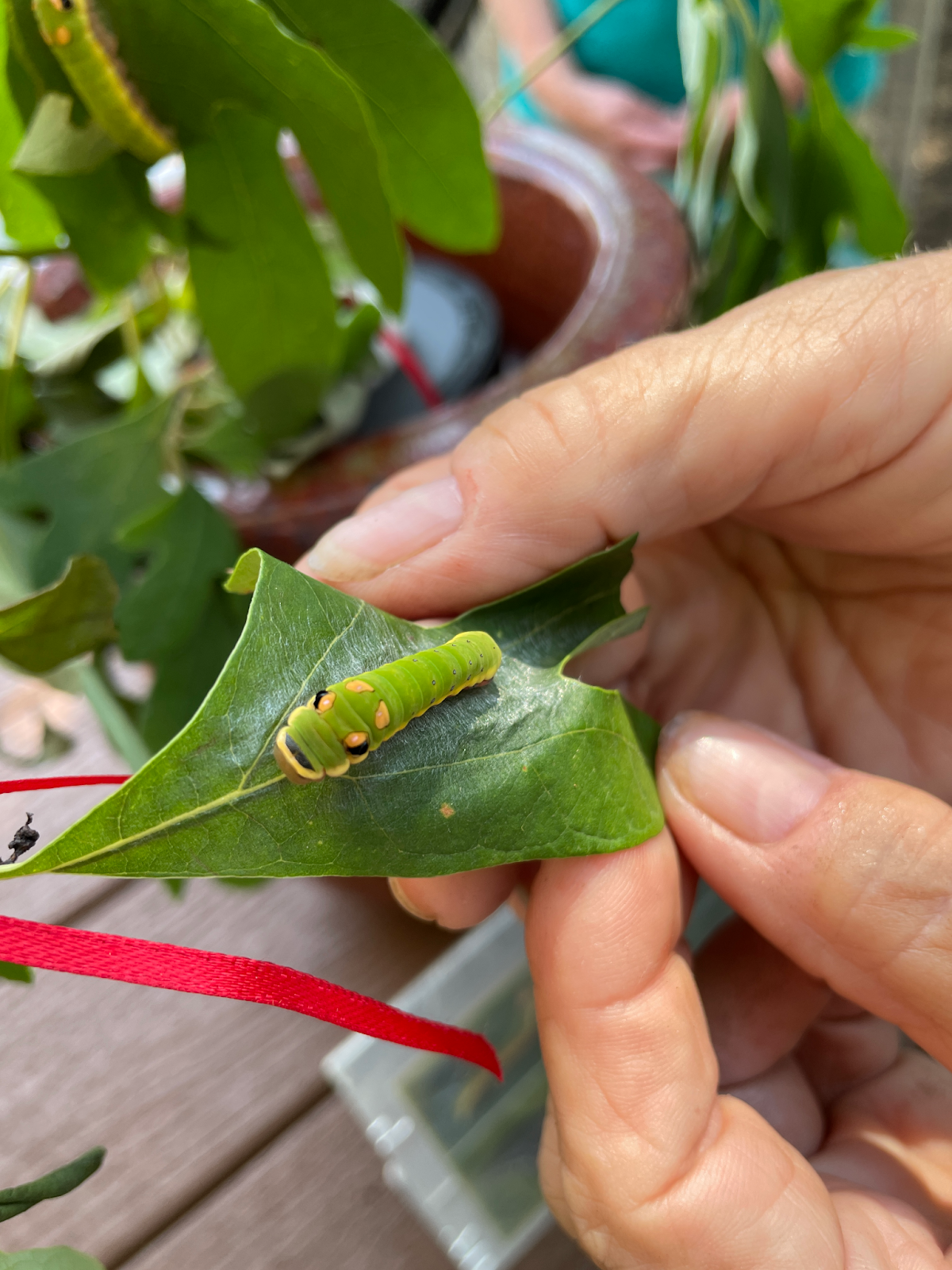
USA Today Recognition
The USA Today award came after a nomination from a national panel. “The six people nominated the 19 butterfly houses throughout the United States,” Tafoya says. “That in itself was the honor.”
From there, it became a public vote. “Winning was thanks to our members and volunteers,” she says. “They made it happen.”
Visitors can experience the house through Sept. 30. By mid-September, the monarchs begin their journey south, where they are tagged and tracked as they migrate to Mexico and the exhibit naturally winds down.
After that, the rhythm of life continues quietly in chrysalides, waiting for next spring. “I tell them it’s a fabulous Airbnb for them,” Tafoya says. “With Uber Eats delivery every single day.”